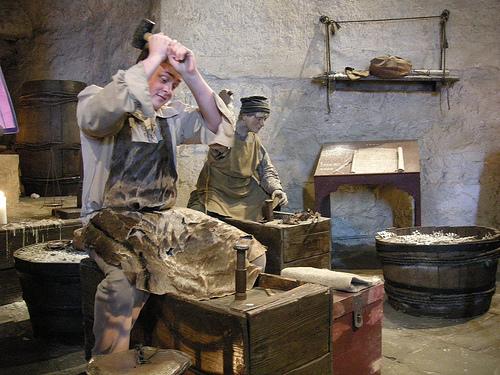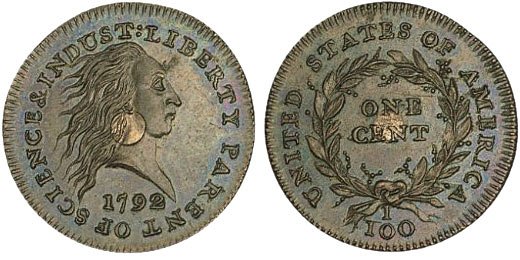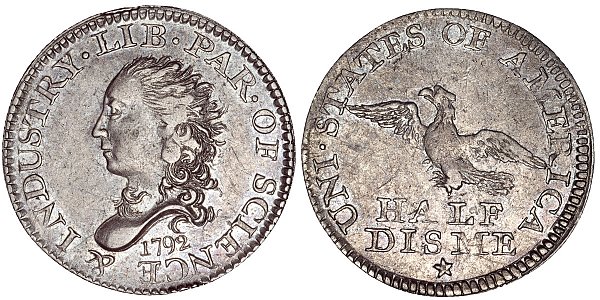Henry Voigt
US Coin Designer of Flowing Hair Large Cent and Silver Center Cent
Henry Voigt (sometimes known as Henry Voight), was one of the first designers of US coins. Voigt was born in 1738 and grew up working as a clockmaker and also a maker of mathematical instruments. In Reading Pennsylvania, he ran a wire mill where he repaired watches and clocks for Thomas Jefferson. Jefferson and Voight were actually close acquaintances and likely helped him get involved with the US mint. Not only did Henry build and repair watches, he also helped build machines the very first practical steamboat in the world, with the help of John Fitch and his company. Fitche offered Henry a share in his company in exchange for help on engineering the boat.
In fact, Henry Voigt was quite useful during the Revolutionary War in 1775, especially with his expertise in machines. Although after the war in 1790, Voigt and Fitch were successful in creating a commercial steamboat that could be used up to 3000 miles at speeds of up to 8 mph. Benjamin Franklin actually convinced Fitch to embrace the new revolutionary concepts of steam power.
Sometime later in 1791, Fitch and Voigt both applied for jobs at the United States mint, which was just being born at the time. Their goal was to help pay the bills and give them more time to perfect their steamboat. Fortunately, Voigt was experienced in machining and coining since he had already worked at the Mint of Saxe Gotha in Germany when he was younger. So he ended up landing a job as Chief Coiner of the US mint where he would help design and engrave some of the first US coins. Unfortunately, Fitch was unsuccessful in getting the job. Voight was married and had children, but he got into an affair with a landlady and widow named Mary Krafft and had two more children with her. Fitch wanted to protect Mary's reputation during the fallout and so he married her - which ultimately put an end to the partnership between Henry Voigt and John Fitch.
Voigt produced a number of the very first coins ever minted in the United States. Primarily these coins include the designs and engraving of the Flowing Hair Large Cent (both the chain and wreath reverse varieties on back of coin), which are the official and most well known US coins. Although there is some controversy that Henry Voigt was actually the one who designed the first Liberty Cap Half Cent (head facing left), but most historians and numismatists agree that Joseph Wright was the true designer of this coin. Here are some of these designs shown below:
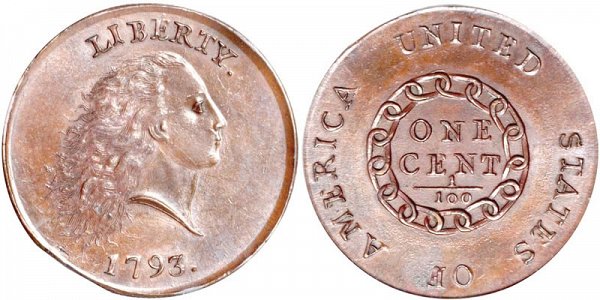
Henry Voigt's design of the Flowing Hair Liberty Large Cent with a linked chain reverse.
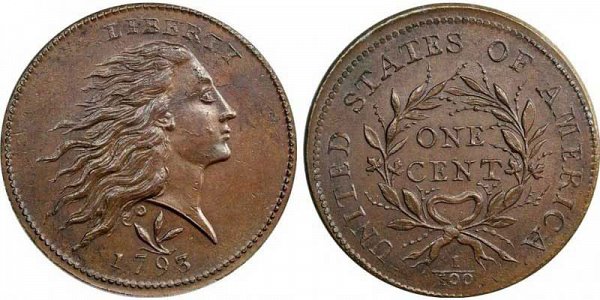
Henry Voigt's design of the Flowing Hair Liberty Large Cent with a wreath reverse.
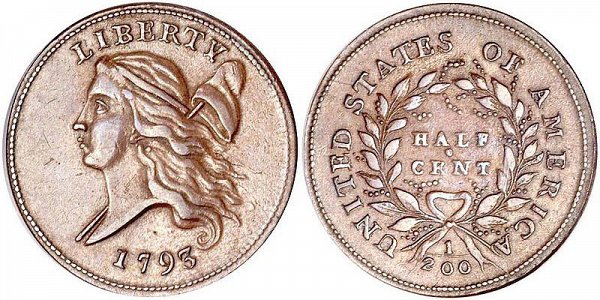
Liberty Cap Half Cent design officially made by Joseph Wright, but some believe it was designed by Henry Voigt.
In addition to the common, official US coins, Voight is also responsible for rarer and not-so-common older coins. First, it's helpful to note that US coins were authorized to be minted after the Coinage Act of 1792 was signed on April 2, 1792. There was a requirement to maintain the intrinsic value of the metal and would have required a very large copper coin for the one cent piece. Henry came up with an idea to create a bimetallic coin consisting of a copper planchet with a small plug of silver metal in the center. This coin was called a silver center cent, minted in 1792 and was the predecessor of the pure Copper Large Cent. The design included the flowing hair liberty and the words "LIBERTY PARENT OF SCIENCE & INDUST." with a wreath on the reverse. Almost immediately, they realized that this coin took a lot of work to create and was impractical for future minting. One of these coins sold at auction for $414,000 in 2002 and PCGS offered an uncirculated MS61 grade silver center cent for over $1 million.
Also, Voigt was also involved in the production of the very first US coins ever made in 1792, the infamous 1792 Half Disme, which was designed by Robert Birch and Joseph Wright. This coin was the predecessor of the more common silver half dimes. Voigt served as the planchet adjuster and coiner during the production of the half disme. These were struck in July in the basement of a local saw-maker shop in Philadelphia, before the actual mint buildings were even finished being constructed! Only about 1500 of them were ever made and it is estimated that only 200-400 coins have survived and still exist today. An uncirculated MS67 PCGS grade half disme was sold in 2006 for $1,322,500 and another MS68 NGC grade coin was sold for $1,500,000 in 2007.
